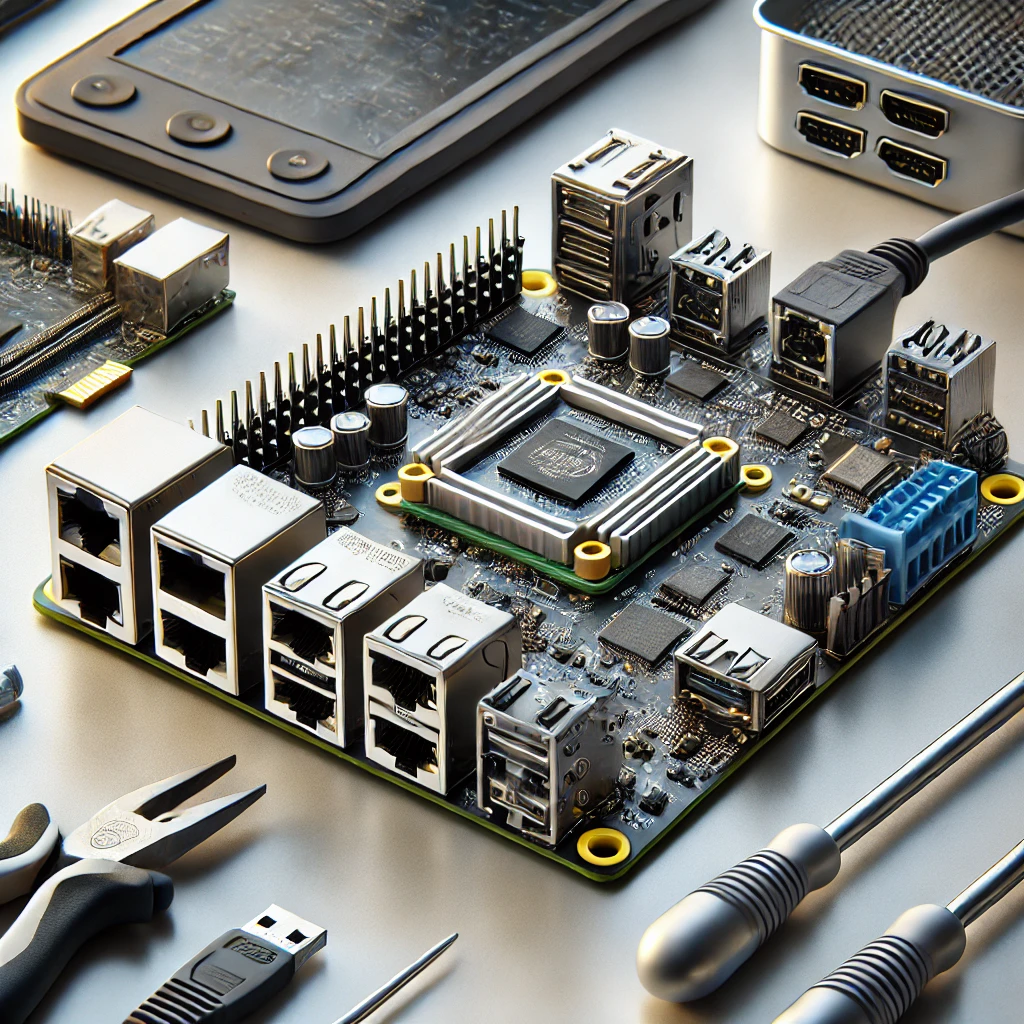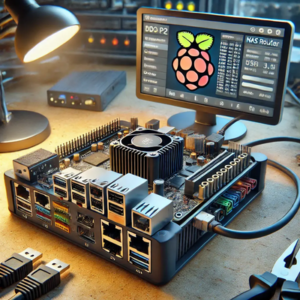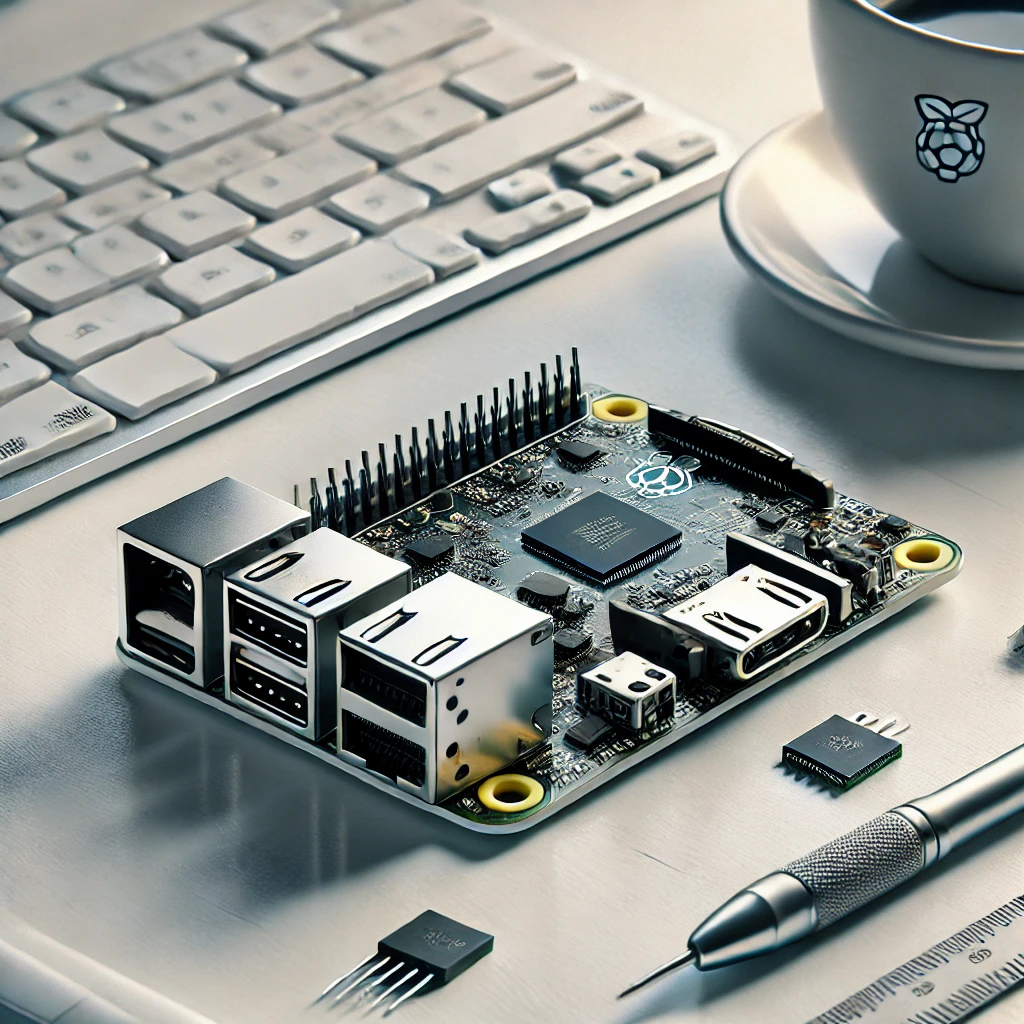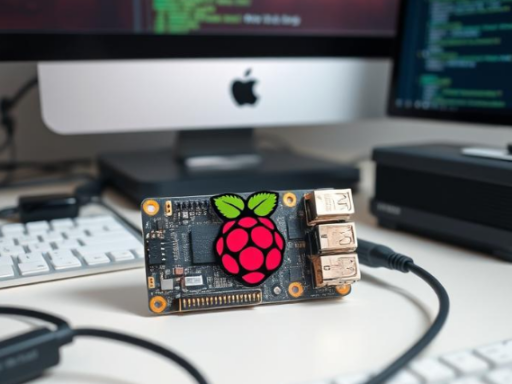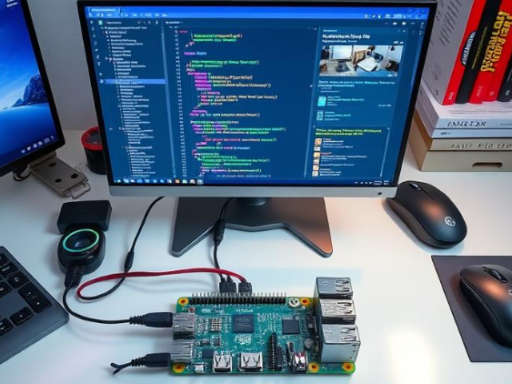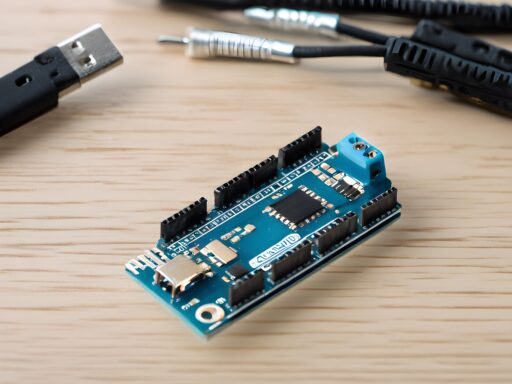The Banana Pi BPI-W2 is a versatile NAS, router, and media server board with dual Gigabit Ethernet, SATA, USB 3.0, and 4K video output, ideal for storage and networking.
Banana Pi BPI-W2 NAS Router Board
The Banana Pi BPI-W2 NAS Router Board is a powerful development platform designed for high-performance networking, storage, and media applications. This board integrates the Realtek RTD1296 SoC (System on Chip), a quad-core ARM Cortex-A53 processor, with extensive connectivity options like dual Gigabit Ethernet ports, SATA III, USB 3.0, and PCIe expansion. It is an ideal platform for building custom Network-Attached Storage (NAS) systems, routers, media servers, and IoT gateways.
Whether you are working on a small home project or a large-scale industrial deployment, the BPI-W2 is versatile enough to meet the demands of multiple applications. From fast data transfers to 4K media streaming, this platform offers all the power and flexibility needed for complex tasks. The board can easily support various file systems, streaming protocols, and network configurations, making it an excellent choice for developers and hobbyists.
In this article, we will delve into the key features, specifications, and applications of the Banana Pi BPI-W2 NAS Router Board, showcasing how it can be leveraged for building powerful solutions in diverse environments.
Key Features and Specifications
A. Realtek RTD1296 Processor: High-Speed Performance
The Realtek RTD1296 SoC, at the heart of the Banana Pi BPI-W2, is a quad-core ARM Cortex-A53 processor that strikes an excellent balance between performance and power efficiency. Running at clock speeds of up to 1.4 GHz, this processor is designed to handle multimedia processing, high-speed data transfers, and secure networking tasks. Whether you are building a NAS system, a router, or a media server, this processor provides enough muscle to handle multiple tasks simultaneously without taxing the system.
The RTD1296 integrates a Mali-T820 MP3 GPU, enabling 4K video decoding and supporting advanced multimedia applications such as video streaming and decoding for high-definition content. This feature makes the BPI-W2 a great choice for home theater PC (HTPC) setups or media streaming devices, capable of delivering high-quality video output to any connected screen.
B. 2GB RAM and Expandable Storage
The Banana Pi BPI-W2 comes equipped with 2GB of DDR4 RAM, ensuring smooth performance for multitasking, data processing, and media streaming. This amount of memory is sufficient for running network services, file sharing, and even light virtualization tasks. As modern applications continue to require more memory for seamless performance, 2GB provides an optimal balance for many use cases.
For storage, the BPI-W2 offers built-in eMMC storage for fast boot times and reliable system storage. In addition, it supports expandable storage through SATA III ports and USB 3.0, enabling users to connect external drives, SSDs, or RAID arrays. The inclusion of SATA III ports further enhances the board’s storage capabilities, allowing users to connect high-capacity storage devices to build a scalable NAS system or media library.
| Feature | Description |
|---|---|
| RAM | 2GB DDR4 RAM |
| Storage | eMMC storage, SATA III, USB 3.0 |
| Processor | Realtek RTD1296 (Quad-core ARM Cortex-A53) |
| GPU | Mali-T820 MP3 (4K Video Decoding) |
C. Extensive Connectivity Options
One of the standout features of the Banana Pi BPI-W2 is its array of connectivity options, which make it ideal for networking, storage, and media applications. The board is equipped with dual Gigabit Ethernet ports, allowing for high-speed wired connections for network file sharing, media streaming, or building a custom router. With Gigabit Ethernet, the board can support multiple devices on a fast, stable network without bottlenecks, ensuring uninterrupted data flow for large files or HD video streams.
For storage expansion, the board supports SATA III ports for connecting external HDDs or SSDs, offering fast data transfer speeds and high-capacity storage. USB 3.0 ports allow for connecting additional peripherals like external hard drives, printers, or other USB-based devices, providing flexibility in system configuration. Furthermore, the inclusion of a PCIe slot opens up opportunities for expanding the board’s capabilities, allowing users to add Wi-Fi cards, 5G modems, or even additional storage controllers.
| Connectivity | Description |
|---|---|
| Ethernet | Dual Gigabit Ethernet ports |
| Storage | SATA III for HDD/SSD, USB 3.0 |
| Expansion | PCIe slot for Wi-Fi, 5G, or extra storage |
D. Dual HDMI and Display Ports
The Banana Pi BPI-W2 offers dual HDMI outputs and a DisplayPort, which support 4K video output, making it ideal for multimedia and display applications. These output options enable the BPI-W2 to function as a powerful media center, delivering high-definition video to multiple screens simultaneously. The dual HDMI outputs are particularly useful in multi-display setups, allowing for the configuration of sophisticated video walls, signage systems, or home theater PCs.
With the 4K video decoding capabilities of the Mali-T820 MP3 GPU, users can stream high-definition content, including movies, games, and presentations, with flawless quality. This makes the BPI-W2 perfect for home theaters, digital signage, or any setup that requires high-quality visual output.
| Video Output | Description |
|---|---|
| HDMI Ports | Dual HDMI 2.0 for 4K video output |
| DisplayPort | Supports additional displays, 4K output |
Applications and Use Cases for the Banana Pi BPI-W2
The Banana Pi BPI-W2 offers immense versatility for various applications, from NAS systems to home media servers and custom routers. Its high-speed networking, extensive storage options, and multimedia capabilities make it suitable for use cases across industries and personal projects.
A. NAS (Network Attached Storage)
The BPI-W2 is ideal for creating a NAS system, capable of storing and sharing large volumes of data across a network. With dual Gigabit Ethernet ports, fast SATA storage, and USB 3.0 connectivity, users can build a powerful NAS solution that supports multiple clients, fast data transfers, and high storage capacity.
The dual SATA III ports enable users to connect multiple hard drives or SSDs, ensuring high-capacity storage and redundancy for sensitive data. The system can be configured with RAID for additional data protection. With a custom NAS built on the BPI-W2, users can store large media libraries, back up essential files, and securely share data within their network.
| NAS Features | Description |
|---|---|
| Storage Options | Dual SATA III for high-capacity storage |
| Data Redundancy | Supports RAID configurations for data safety |
| Connectivity | Dual Gigabit Ethernet for fast data transfer |
B. Home Media Server
For home entertainment, the BPI-W2 makes a great media server capable of streaming 4K video content across devices. The powerful Mali-T820 MP3 GPU and dual HDMI outputs ensure high-quality video and audio output to TVs, projectors, and screens.
Using the BPI-W2, users can set up a home media server capable of streaming movies, music, and TV shows in HD or 4K resolution. The device can support various media formats and protocols, ensuring compatibility with different streaming devices. It can also be integrated with streaming software such as Plex or Kodi for an enhanced media experience.
| Media Server Features | Description |
|---|---|
| 4K Video Support | Powered by Mali-T820 MP3 GPU for 4K video |
| Streaming Protocols | Supports Plex, Kodi, and other media software |
C. Custom Router and Firewall
Given its extensive connectivity features, the BPI-W2 is an excellent choice for building a custom router or firewall. It can handle the secure routing of traffic, act as a firewall, and provide VPN services for multiple devices in a network.
With the dual Gigabit Ethernet ports, users can create a high-performance router capable of managing both local and wide-area networks, handling multiple connections simultaneously. The board can be used to set up firewall protection, manage Quality of Service (QoS), and implement advanced network security protocols.
| Router/Firewall Features | Description |
|---|---|
| Dual Gigabit Ports | For fast, secure wired networking |
| VPN & Firewall | Secure traffic management |
D. IoT Gateway and Edge Computing
The Banana Pi BPI-W2 is also a powerful platform for building IoT gateways or edge computing devices. It can collect and process data from IoT sensors and devices locally, sending data to the cloud for further analysis or acting as an edge server for real-time processing.
This capability is essential for applications that require immediate data processing and response without the need to send data to distant cloud servers. The BPI-W2 can aggregate sensor data, control devices, and perform analytics at the edge, improving overall system efficiency and reducing latency.
| IoT Gateway Features | Description |
|---|---|
| Edge Processing | Real-time data processing and decision-making |
| Connectivity | Supports various IoT protocols and cloud integrations |
Power and Flexibility in a Compact Form
The Banana Pi BPI-W2 NAS Router Board is a robust, flexible, and high-performance platform designed to meet the needs of a wide range of networking, storage, and multimedia applications. Equipped with the Realtek RTD1296 SoC, 2GB DDR4 RAM, dual Gigabit Ethernet ports, and expandable storage options, it delivers superior performance for NAS systems, custom routers, media servers, and IoT gateways.
Whether you are building a home server, setting up a custom router, or developing an IoT edge computing solution, the BPI-W2 provides all the connectivity, processing power, and multimedia capabilities required for modern applications.

